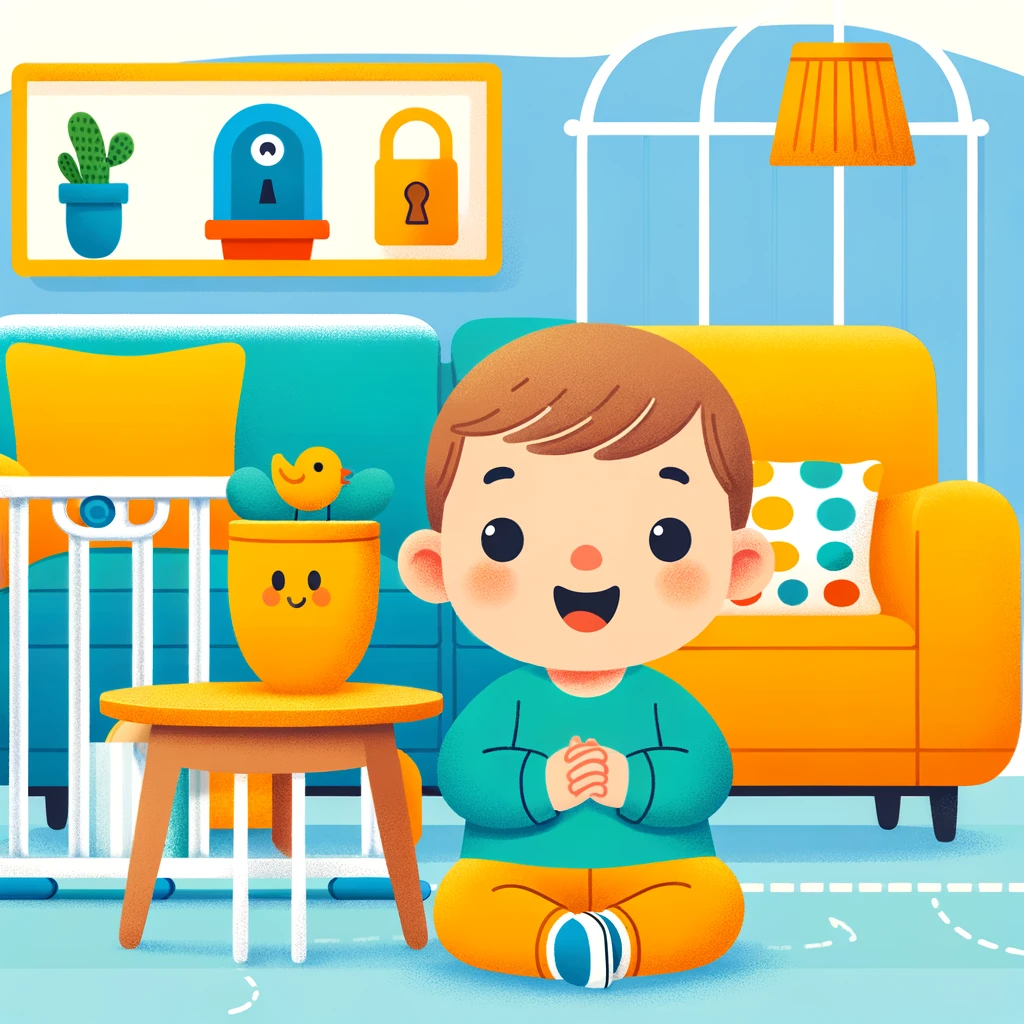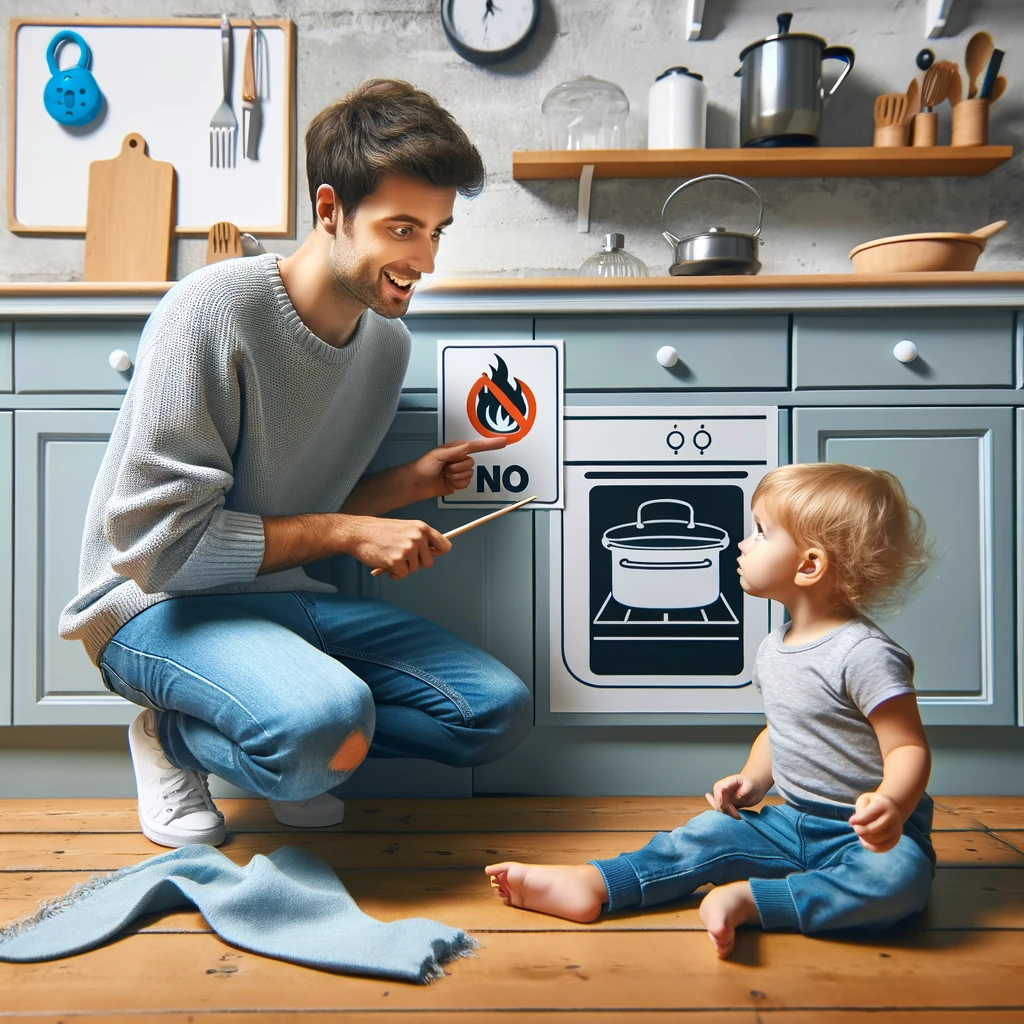The toddler years are filled with explosive growth and exploration. These tiny explorers’ worlds grow significantly as they learn to walk, climb, and reach. But there are also serious concerns associated with this increased mobility and curiosity. The house that appeared safe at first can now be full of hazards, such as unsecured stairs, accessible cabinets, sharp corners, and small objects. Safety must be the top focus during this dynamic time, as parents and caregivers must anticipate and reduce hazards.
Toddler safety demands a diversified strategy. It begins with being aware of your child’s developmental stage. Because they are inherently curious, toddlers explore their surroundings by touching, tasting, and testing things. This means that parents need to be proactive, seeing such threats early on and taking appropriate action. It becomes imperative to childproof the house, which includes locking cabinets, strapping furniture, installing safety gates, and making sure dangerous items are kept well out of reach. It’s important to provide a safe environment where children can explore and learn without needless constraints in addition to erecting physical boundaries.
Toddlers will experience a variety of settings outside of the house, including playgrounds, parks, daycare facilities, and other homes. Every environment has unique hazards and problems. Being prepared and vigilant are essential. This entails knowing where your child is at all times, being familiar with the layout of unfamiliar locations, and continuously keeping an eye out for any potential threats.
Safety and Education
But safety is more than just avoidance. Education is also a factor. A foundation for lifetime safety awareness can be established by teaching toddlers basic safety standards, modeling safe conduct, and repeatedly reinforcing these teachings. Getting kids involved in their personal safety can increase their awareness of their surroundings and teach them the value of exercising caution.
We’ll explore useful tips and methods in this article to help you through this thrilling but difficult stage. We hope to provide parents and caregivers with the information and resources needed to ensure a safe environment where toddlers can flourish, learn, and grow. These resources range from room-by-room safety recommendations and common danger prevention to emergency readiness and fostering a safety-first mindset.
Knowing the Fundamentals of Child Safety

Household Security: Establishing a secure space for toddlers to explore without fear of injury is crucial. Locking cabinets, strapping furniture, and keeping dangerous goods away are examples.
Outdoor Safety: Toddlers love playing and learning outside, but they should be mindful of hazards including uneven terrain and water. To avoid these hazards, first understand them.
Key Toddler Safety Methods Consistent supervision: Being vigilant is crucial. No amount of safety precautions can substitute your regular child supervision.
Learn how to set up a safe play place that fosters exploration without compromising safety.
Emergency preparedness is as vital as prevention. Learn basic first aid and keep emergency numbers.
An Overview of Safety by Room
Bedroom Safety: Make sure your child’s resting space is free of potential dangers, such as loose bedding or easily accessible small objects.
Kitchen Safety: There are numerous possible hazards in the kitchen. Find out how to protect your child from hot surfaces, sharp objects, and poisonous materials.
Bathroom Safety: For young children, water poses a serious risk. Learn how to enjoy yourself and keep bath time safe without minimizing the risks.
Living room Safety: Your toddler should be able to play and learn in a safe environment in your living room. Learn how to keep gadgets, furniture, and other items safe.
Typical Risks and How to Prevent Them
The risk of choking on little things is high. Discover how to spot and remove potential choking dangers from your house.
Fall Prevention: One of the most frequent types of accidents is a fall. Recognize how to avoid them by using the appropriate safety gear and procedures.
Preventing Poisoning: A lot of everyday objects in the home might be harmful to young children. Understand proper storage practices and what to do in case of poisoning.
First Aid Information for Guardians

Any parent or caregiver can benefit greatly from knowing the basics of first aid, especially in the unpredictable world of toddlerhood. It takes more than merely reacting to mishaps to handle them confidently and effectively. Knowing how to treat common injuries in toddlers can help lessen the severity of an accident and make the kid and caregiver feel better.
Kidney injuries that occur frequently are falls, wounds, burns, and choking. Every one calls for a different answer. For example, it’s important to know how to evaluate an injury from a toddler falling and bumping their head for indicators of a concussion or more serious harm. It’s critical to know when stitches could be required for injuries, as well as how to clean the wound and apply pressure to stop the bleeding. Burns must be immediately cooled under running water, but it’s important to understand the difference between a minor burn that can be treated at home and a more serious burn that has to be seen by a doctor.
While choking is an especially frightening situation, knowing how to do the Heimlich maneuver and child CPR can save lives. However, it’s not only about the quick answer. In addition, parents and other caregivers need to be aware of how to console a kid after an injury and keep an eye out for any delayed symptoms.
First aid classes are widely offered and frequently designed with child care providers in mind. Devoting time to this kind of training guarantees that you’ll be ready to handle common accidents promptly and skillfully, giving your child the finest care possible during those critical times.
Educating Your Child About Safety

Toddler safety requires regular monitoring, but it also necessitates educating toddlers about safety so they can appreciate the value of exercising caution. This two-pronged strategy safeguards kids in the now while simultaneously laying the groundwork for long-term safety awareness. Effective safety education for your child requires setting a good example, communicating intelligibly, and providing constant reinforcement.
Begin with the fundamentals: Start by introducing your youngster to basic safety guidelines that are simple for them to comprehend and retain. Use phrases that are easy to understand and concise, like “hot, don’t touch” or “stay close to mommy/daddy.” Pay attention to the fundamentals, such as avoiding hot surfaces, touching sharp objects, and going nowhere near stairs or high locations.
Provide Teachable Moments: There are lots of opportunities to teach safety in everyday situations. Discuss the risks associated with the stove and the need for them to avoid it if you’re in the kitchen. Talk about the value of holding hands and checking both directions before crossing a road when you’re close to one. Make the teachings relevant and easy to learn by using real-world examples.
Positive Reinforcement: Congratulate your child for adhering to a safety regulation. Positive reinforcement helps children see the importance of what they’re doing and promotes excellent conduct. Provide an explanation to assist them comprehend why a particular activity is harmful, rather than just telling them to “stop” or “no.”
Regular Regulations and Penalties: In the classroom, regularity is essential. Rules that are significant should always be followed. Toddlers may become confused by inconsistent behavior and may be less inclined to obey rules. Remind them politely of the safety guideline and its justification if they disobey it. Consider enforcing a consistent and suitable consequence for persistent wrongdoing.
Age-appropriate Education: Adapt your safety instruction to the developmental stage and age of your kid. While older toddlers are capable of understanding more sophisticated instructions and reasoning, younger toddlers may only be able to understand basic concepts and orders. To make the message understandable, use language and examples that are appropriate for the target audience’s age.
Interactive Learning: Play and interaction are the best ways for toddlers to learn. Make use of narratives, games, and songs with safety themes. Numerous tools are available to make learning about safety enjoyable and interesting, ranging from books to apps. Another useful method is role-playing; rehearse what to do in various situations, such as a fire drill or becoming lost in a supermarket.
Setting an Example: Kids pick up a lot of knowledge by watching adults. They are more likely to imitate safe behavior if you model it for them. Always buckle up, always check both directions before crossing the street, and always lead by example. One of the best teaching strategies is to set a good example for others in terms of safety.
Encourage Questions: Toddlers will begin to ask questions as they start to speak more. Encourage this curiosity and be prepared to address any concerns they may have regarding safety. This helps you assess what they know and what areas might require extra attention in addition to reinforcing the lessons.
Include Them in Safety Checks: Involve your child in the process of keeping themselves safe. Assist them with chores like toy storage or smoke detector checks to save them from falling. This instills in children a sense of responsibility in addition to safety.
Be Ready for Errors: Recognize that toddlers will make errors. They continue to experiment and learn. When mishaps occur, turn them into teaching moments rather than punishment sessions. Talk about what went wrong and how to prevent it from happening again.
Toddler safety is primarily based on supervision, but education is also very important in helping them learn the value of caution. To teach children about safety, parents and caregivers can use engaging learning strategies, regular reinforcement, and clear communication. This provides children with protection during their early years and establishes a foundation for a lifelong understanding of safety.
Using Technology to Keep Toddlers Safety
From GPS trackers to baby monitors, modern technology offers a variety of methods to improve child safety. Examine your options and how best to apply them.
Legal Aspects and Childproofing Guidelines
By knowing the legal ramifications of childproofing and safety regulations, you can make sure your child is in the safest environment possible.
Local Resources for the Safety of Young Children
Find local resources in your area, including as support groups and classes, to help you along the way with toddler safety.
Including Safe Play in Everyday Activities
everyday Routine Safety: It’s important to incorporate safety into your toddler’s everyday routine. Discover how to reduce hazards and make daily activities like eating, taking a shower, and playing safe and pleasurable.
Travel Safety for Toddlers on the Road: To make every trip as safe as possible, remember the value of appropriate car seats, driving without distractions, and vehicle safety inspections.
Public Transport: How to take your baby along on buses, trains, and other public transport modes.
Considerations for Seasonal Safety
Summer Safety: Keeping your toddler safe from water-related hazards, sunburn, and heatstroke.
Winter safety is making sure your child keeps warm, avoids trips and falls, and is shielded from risks that are specific to the colder months.
Security in Social Contexts
How to convey your child’s demands and uphold safety standards when visiting friends and family when you’re not at home.
Playdates and Social Interactions: Keeping an eye on interactions between kids and establishing a secure play space.
Beyond the Basics: Advanced Childproofing Techniques Investigate sophisticated childproofing techniques for objects and spaces you may not have thought about.
Nutritional Safety for Toddlers Safe Eating Procedures: How to identify allergies, prevent choking dangers, and introduce new foods in a safe manner.
Safety of the Mind and Emotion
Recognizing the Emotional Requirements of Your Toddler: supplying a secure and encouraging atmosphere that promotes emotional growth and well-being.
Internet safety and technology
Digital Age Children: Navigating the complications of screen time, acceptable content, and online interactions for toddlers.
Getting Ready for the Unexpected Catastrophe Being ready for unforeseen circumstances or natural disasters at home involves assembling a strategy and supplies.
Constructing a Network for Safety
Community Involvement: How becoming involved in your community can improve safety and offer more assistance for your toddler.
Frequent Updates and Reviews of Safety
Remaining Up to Date: Keeping up with the most recent safety advice and merchandise helps improve your child’s safety throughout time.
Final Thought: Adopting a Safety-Priority Mentality
Making sure your toddler is safe is an ongoing effort that changes as they become older. Adopt a safety-first mentality, continue your education, and be ready for anything at all times.






